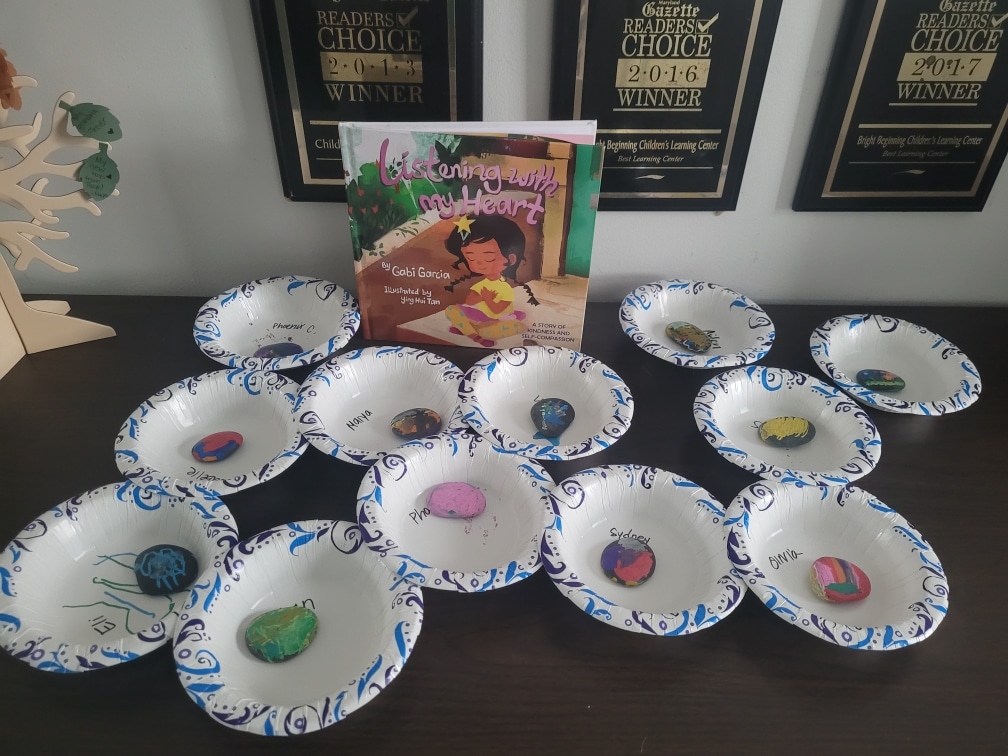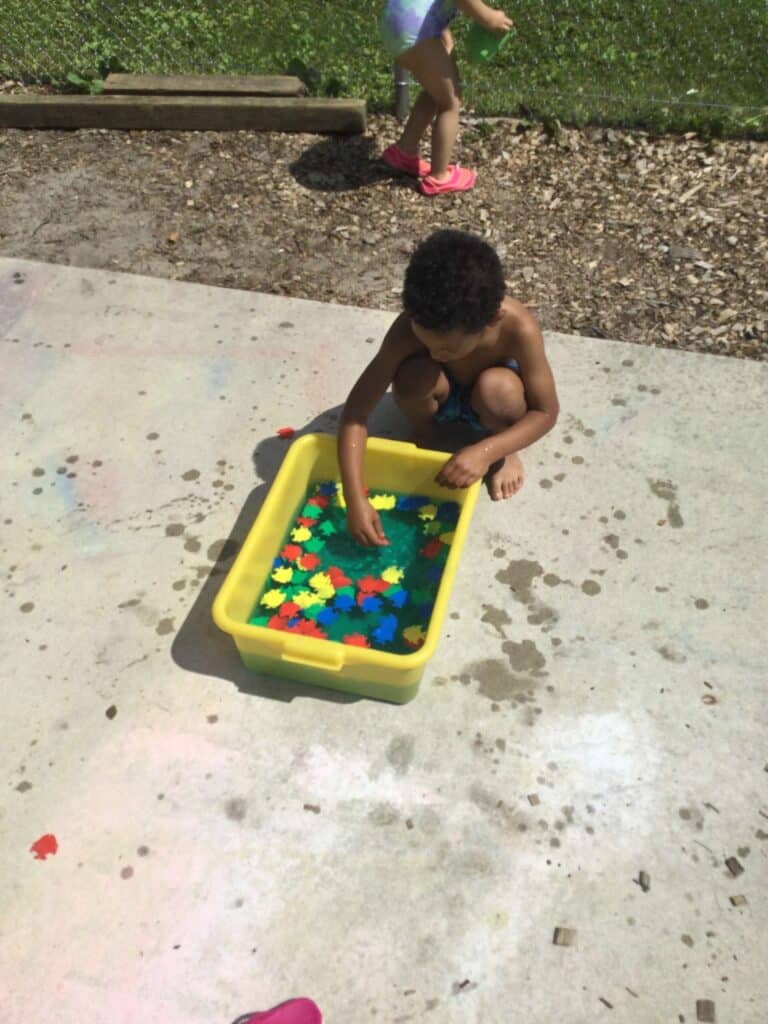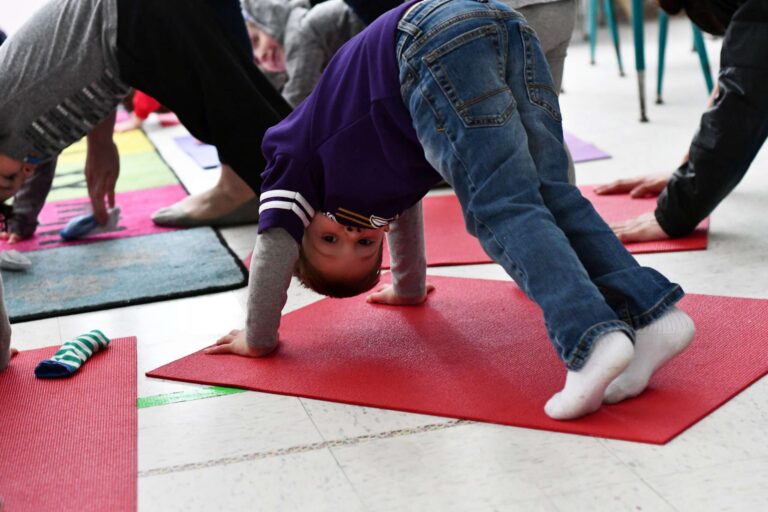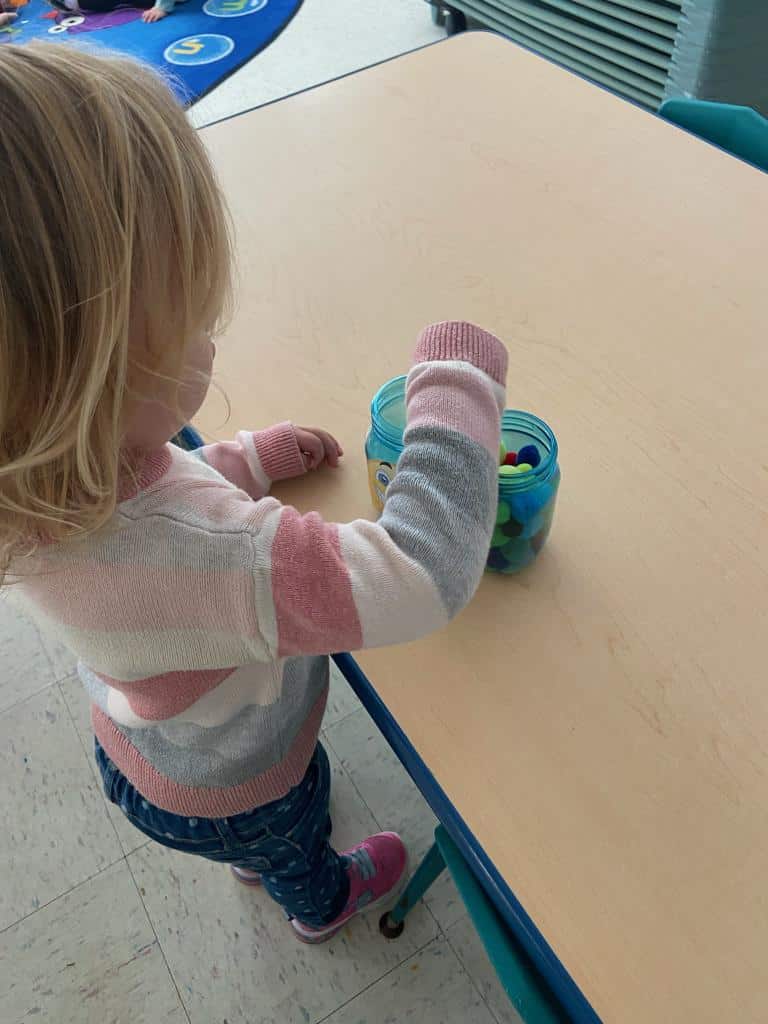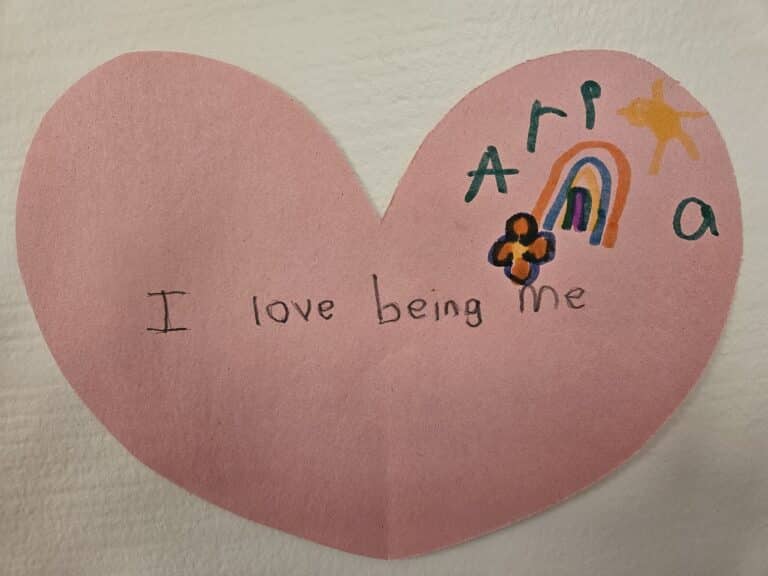Did you know the color green represents kindness? Green is often associated with nature, health, healing, the environment, reliability, generosity, and practicality. It also encourages generosity, kindness, and sympathy.
On our Positive Education focus day, we encouraged the children and teachers to wear green!
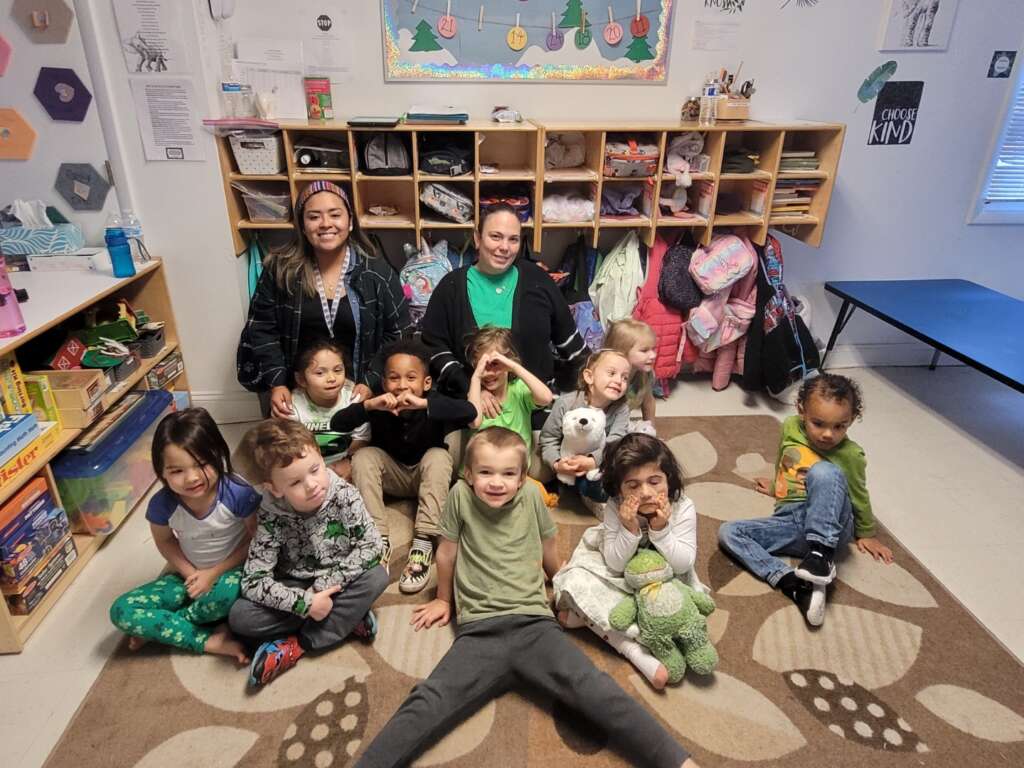

During the designated Special time, the teachers asked the children what self-compassion means. (The definition of Self-Compassion entails being warm and understanding toward ourselves when we suffer, fail, or feel inadequate, rather than ignoring our pain or being too hard on ourselves with self-criticism. ) For littles to understand, we asked “What are ways to be kind to ourselves?” Each friend had a turn to share.
The teachers then read the book, “Listening with My Heart” by Gabi Garcia. The book is about a child finding a heart-shaped rock and she sees it as a reminder to spread kindness and love in the world. The book reminds us of the importance of being friends with ourselves and touches on the topic of friendship, empathy, and self-acceptance.
The children then had an opportunity to paint their very own Kindness Rock! This is such a fun and easy activity to do at home as well. You can either keep the rock for yourself as a reminder or share it with others (maybe placing it in your neighborhood for others to find!)
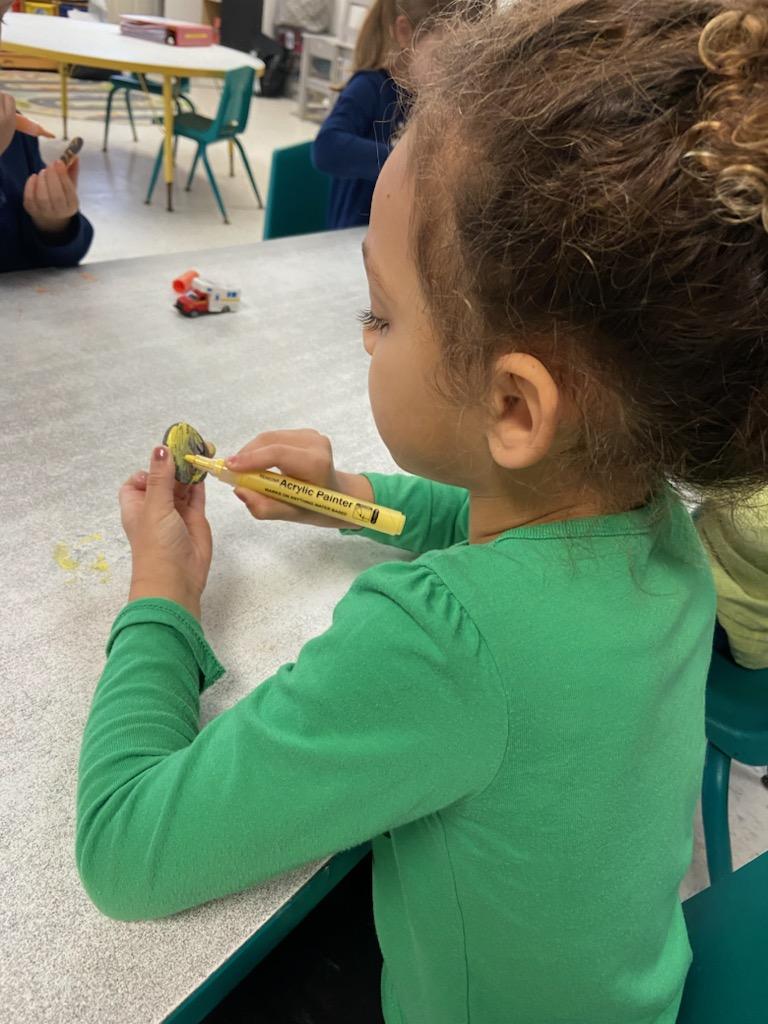
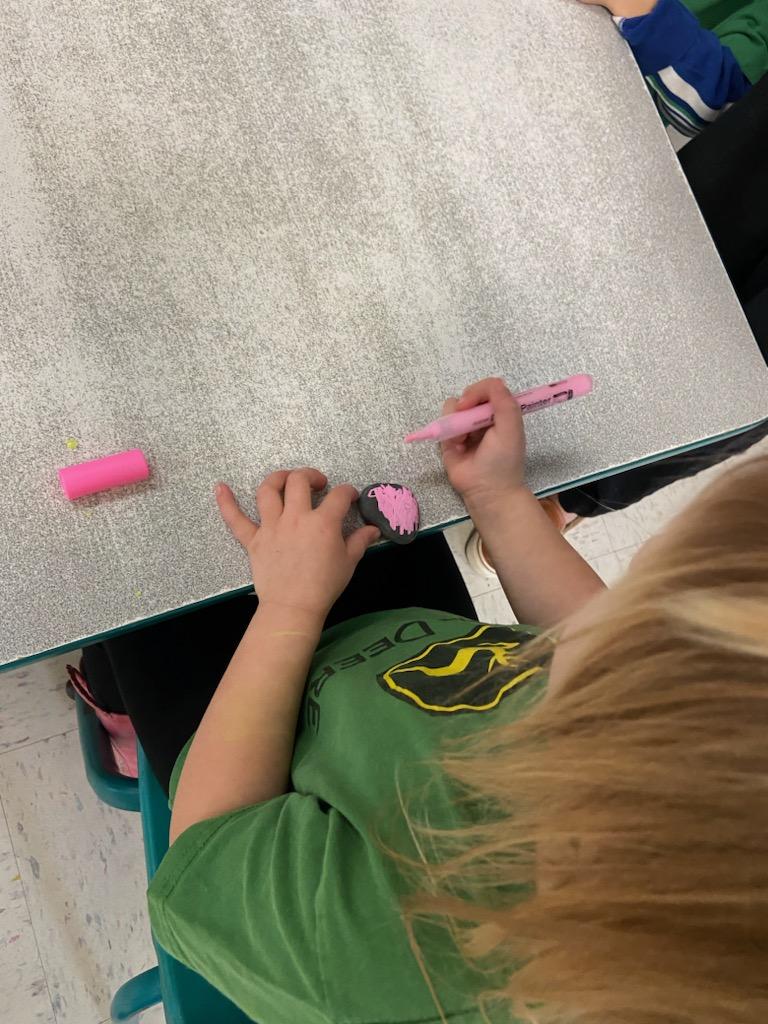
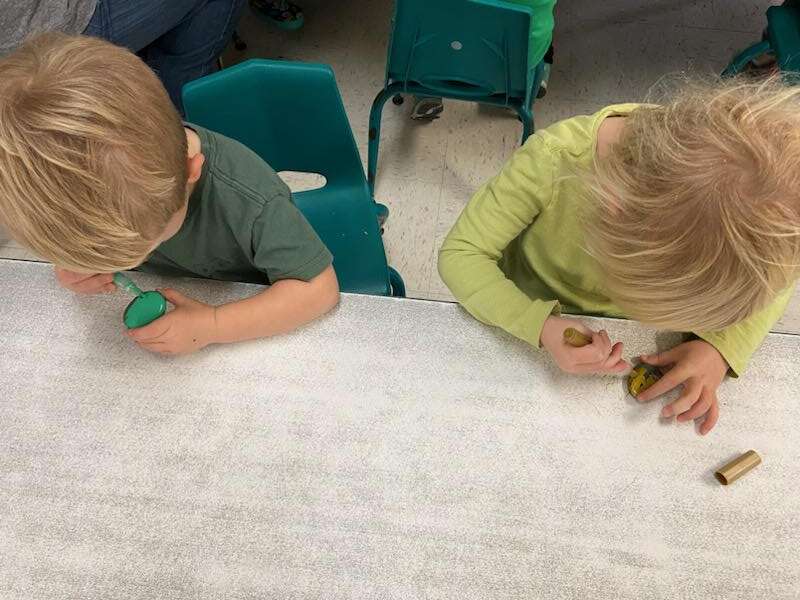
This is the perfect time of year to give yourself self-compassion and resiliency as the holidays tend to add some added stress, worry, and anxiety. Here are some ways to model self-compassion and resiliency for others (especially littles) to see.
1. Be a Supportive Role Model
Model resilient behaviors. Be calm and consistent. Admit your own mistakes and talk about how you’ll do better next time.
2. Let Them Make Mistakes
Let them see the consequence of their actions. They will learn how to bounce back from their mistakes and do better next time.
3. Praise The Right Way
Give “process praise” by focusing on strategies, progress, or effort “I can tell you’ve been working hard.”
4. Teach to Manage Emotions
Teach them all emotions are okay. Deal with bad behaviors to set limits. Brainstorm ways to fix problems and prevent them in the future.
5. Teach to Problem Solve
Don’t rush to solve problems for them or tell them the solution. Brainstorm solutions to address the challenge. Discuss the potential consequences of each solution.
Be sure to come back next week as we will discuss more on the topics of Self-Compassion and Resiliency as well as Holidays Around the World!

